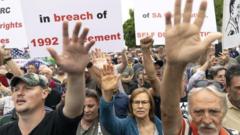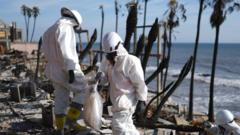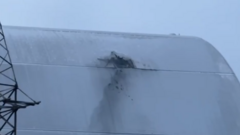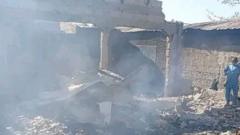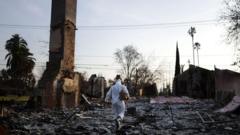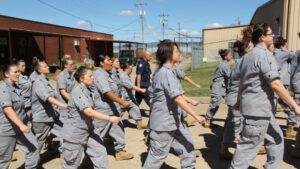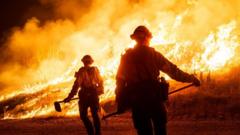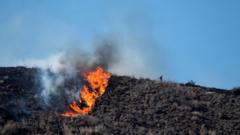As Los Angeles confronts increasing wildfire risks due to climate change, it can draw from global practices to bolster community resilience and safety.
# Los Angeles Wildfires: Future-Proofing Strategies from Around the World

# Los Angeles Wildfires: Future-Proofing Strategies from Around the World
Exploring innovative approaches to wildfire prevention in light of growing climate threats.
The Los Angeles area, particularly vulnerable to wildfires, faces a daunting future as climate change intensifies the impact of fire and wind on the landscape. With recent catastrophic wildfires serving as a wake-up call, community planners are exploring measures not only to rebuild but to fundamentally shift the culture of wildfire preparedness. As the city looks to the future, lessons from other fire-affected regions offer valuable insights on enhancing resilience.
One of the key challenges highlighted by experts like Kimiko Barrett from Headwaters Economics is the necessity for collective action in wildfire risk reduction. Individual home safety cannot be ensured if neighboring properties remain unchecked. The reality is harsh: Even a single neglected yard can introduce catastrophic risk through the propagation of radiant heat during wildfires.
To develop effective strategies, communities must consider landscaping habits, neighborhood cohesion, evacuation routes, and the impact of local vegetation on fire behavior. Boulder County, Colorado, has implemented effective measures to combat wildfire threats by encouraging residents to clear flammable debris and replace hazardous plants, such as juniper, which officials have termed "gasoline plants." The county's efforts have garnered community support, with voters approving tax increases to fund these critical fire prevention initiatives.
For Los Angeles, another hazard looms in the form of palm trees, which can ignite rapidly and prove difficult to extinguish. Given this, experts suggest a reevaluation of landscaping choices in fire-prone areas to prioritize non-flammable species. By fostering a culture of fire-aware landscaping and investing in community education and financial resources, Los Angeles can begin to mitigate its wildfire risks effectively.
Furthermore, bolstering financial resources is essential. Homes should be constructed or retrofitted with fire-resistant materials, but these upgrades often come with financial barriers, leaving many homeowners unable to act. Engagement with community members on financial aid and structural improvements must become paramount.
As Los Angeles navigates its wildfire risk landscape, the incorporation of successful practices from around the world may pave the way for a more adaptive and resilient urban environment, ensuring that future generations can thrive amid the realities of wildfires exacerbated by climate change.


